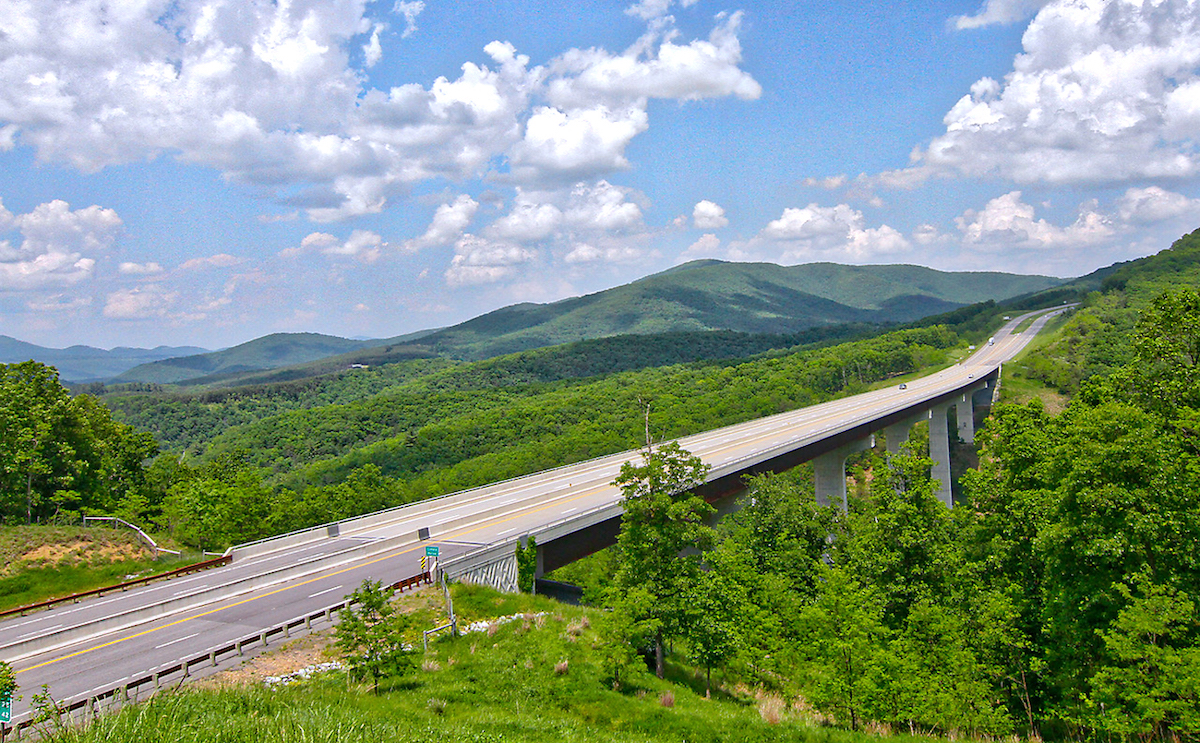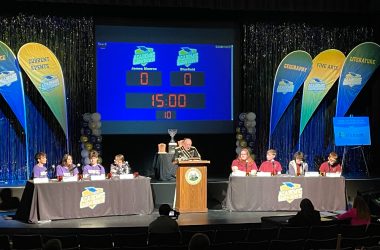By Lon Anderson
Moorefield Examiner
MOOREFIELD, W.Va. — Working to complete Corridor H was a top priority for former Gov. Earl Ray Tomblin, just as it had been for his predecessor, now U.S. Sen. Joe Manchin.

And in the current administration, Gov. Jim Justice’s Secretary of Transportation, Tom Smith, is emphatic about the status of completing Corridor H: “It’s absolutely one of our top priorities” Smith told the Examiner in a recent interview.
Yet, when Gov. Justice recently signed two bills that could ultimately deliver a windfall $2.8 billion of new money for road building in the state, finding Corridor H anywhere on the list of projects to be funded was tough, and it was not mentioned in the news coverage.
Corridor H, of course, is the four-lane, divided interstate highway that, when finished, will span north-central West Virginia, running from Interstate 79 at Weston in the west to I-81 near Strasburg, Virginia, some 143 miles, all totaled. It also bisects Hardy County, running through Moorefield with the four-lane portion currently ending at Wardensville.
Buried in the long list of projects, and scheduled for construction in the first phase, according to State Delegate Isaac Sponaugle, is the route 219 Connector to WV 72 (near Parsons), which will create a four lane stretch for Corridor H, costing approximately $90 million.
Gov. Justice’s road building program, which is the centerpiece of his jobs and economic improvement effort, according to Secretary Smith, “is an eye-popping program.” At his bill signing ceremony, the Governor indicated that road construction across the state could create as many as 48,000 jobs.
Smith indicated that the intent of having projects across the state is to “try to have a balanced program that gives folks throughout the state the feeling that we are doing things.”
But the money to fund all of this, the $2.8 billion, is no certainty yet. The bills that were passed by the State Legislature and signed by the Governor create an additional cash stream of about $140 million per year for transportation, Sponaugle explained. This money is being raised largely through increases in motor vehicle fees and gas taxes.
The Governor wants to use this new annual cash stream for bonding, which could yield over a billion dollars, according to Grant Walker, spokesman for the Department of Transportation.
A couple of other sources — “GARVEE” bonds, which borrow against future federal transportation revenue to the state, and leveraging the Turnpike Authority’s revenue, could raise the total to as much as $2.8 billion.
But for that to happen, the voters of West Virginia will have to approve the sale of bonds in a special election scheduled for this October, Sponaugle explained. According to Sponaugle, who is a member of the House Finance Committee, the state Constitution, requires that when the government seeks to incur future debt that will last longer than one year, it must be put to the voters. Bond debt can last for decades.
If the voters turn down the bond requests, Sponaugle said, then you basically divide $140 million annually by 55, the number of counties, and that’s how much each jurisdiction will have for its road improvements. He wouldn’t speculate about whether the bond referendum will pass, although he said he would be voting for it.
But Sponaugle, who represents Hardy County in Charleston, did say he thought it was done backwards. “We went ahead and raised the taxes and fees before the voters spoke about funding the bonds — it’s sort of strong-arming the voters.” In other words, voters can now vote for the bonds and know that approving the bonds will not cause taxes and fees to be raised — that’s already happened.
So what’s the impact going to be on Corridor H?
“With the Governor’s program,” Transportation Secretary Smith explained, “we are accelerating the opening of more sections (of Corridor H) and cranking it up in a big way.”
He noted that in addition to the work being done with the new money, “We’ll have the regular funding program running in the background,” with some of that money continuing to pay for Corridor H construction.
Robbie Morris, president of the Corridor H Authority, agrees. “There’s a possibility that other parts of the Corridor could be added,” he said. “I understand that the (Governor’s) list were projects that were shovel-ready with all of the environmental approvals, but the list is not set in stone. Just because it’s not on the list at this point in time does not mean there’s no hope of more progress.”
“The Governor has told me personally –- as well as Secretary Smith — that Corridor H remains a high priority,” Morris continued. “It’s my understanding that dirt should be moving shortly on the 7.5 mile Kearns to Parsons stretch — it should be under construction in the next month or so.”
Last year the state let a $209 million public-private partnership contract, the largest of its kind in state history, to build that segment.
Brent Walker, with the W.Va. Department of Transportation, noted that “We’re into some of the most expensive and challenging pieces of the project now.” He noted the last two western segments, the Kearns-to-Parsons and Parsons-to-Davis sections, are very challenging both environmentally and in their engineering. “We’re committed to doing it the right way,” he emphasized.
When those segments are done, he continued, “that will leave us with the last section, Wardensville to the Virginia line.” That stretch is about 5 miles.
So what about the final stretch which is outside the state—the approximately 13-mile segment of Corridor H that will run from the Virginia line to I-81? It’s significant because it will give motorists full four-lane interstate access to central West Virginia from I-81 and I-66, and will give trucks and their cargo containers high speed access to and from the inland port in Front Royal.
Questions arose last year about Virginia’s commitment to completing its portion of Corridor H when VDOT Administrator Charlie Kilpatrick told the Examiner that the project was no longer in their plans because of a change to the way the state selected which projects it was going to fund and build.
“I’ve had a conversation with Charlie and he has assured me that it will be done,” Secretary Smith said. “As we complete more of our portion (of Corridor H) and the traffic increases (on Rt. 55) in Virginia, that will increase its priority for Virginia (to build their segment),” he predicted.
Smith seemed very confident that Corridor H was going to get done. Smith, who worked for the Appalachian Regional Commission (ARC) before becoming Secretary, noted that he had been very involved with the ARC’s network of highways throughout Appalachia. Corridor H is part of that system which was designed to help bring economic development and prosperity to Appalachia.
Another reason he seems confident about the future of Corridor H, he said, was that when the ARC released its latest economic impact study on its highway network, Corridor H was the top performer. The study showed that “for every $1 spent to build Corridor H, we’re getting $5 back in economic benefit,” he explained, and said that was the best in the study. “You’ve got a big fan in me for this road.”
Walker noted that another factor working for Corridor H is the Governor’s commitment to Transportation. “Transportation has never been the centerpiece of a (WV) Governor’s agenda before and this is a key part of his economic recovery program — it’s unprecedented, and Corridor H is going to be a big part of that.”





